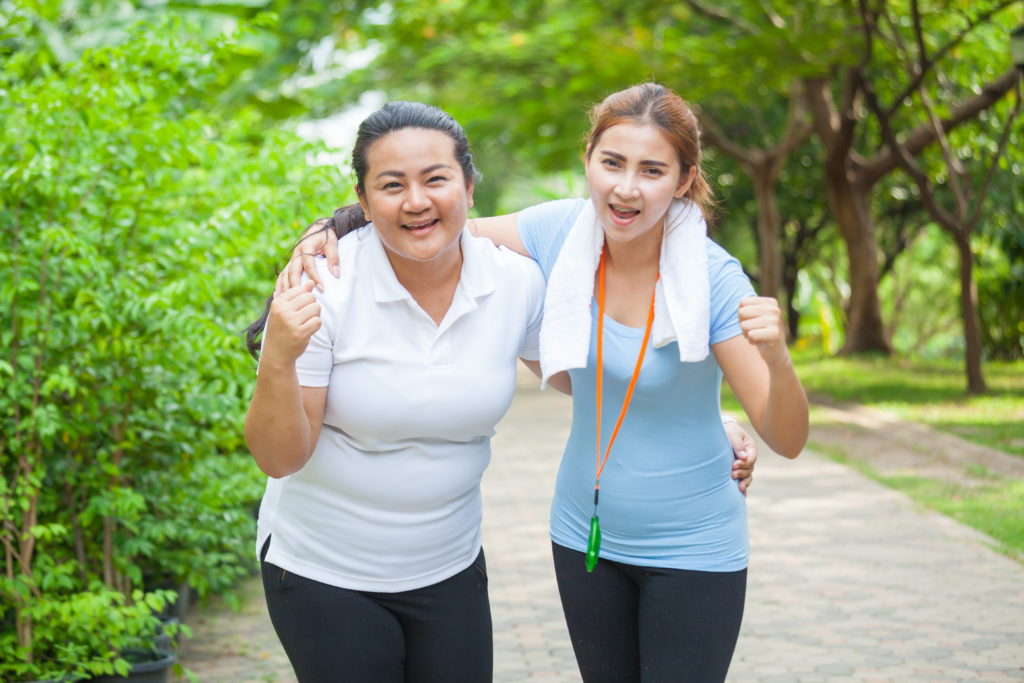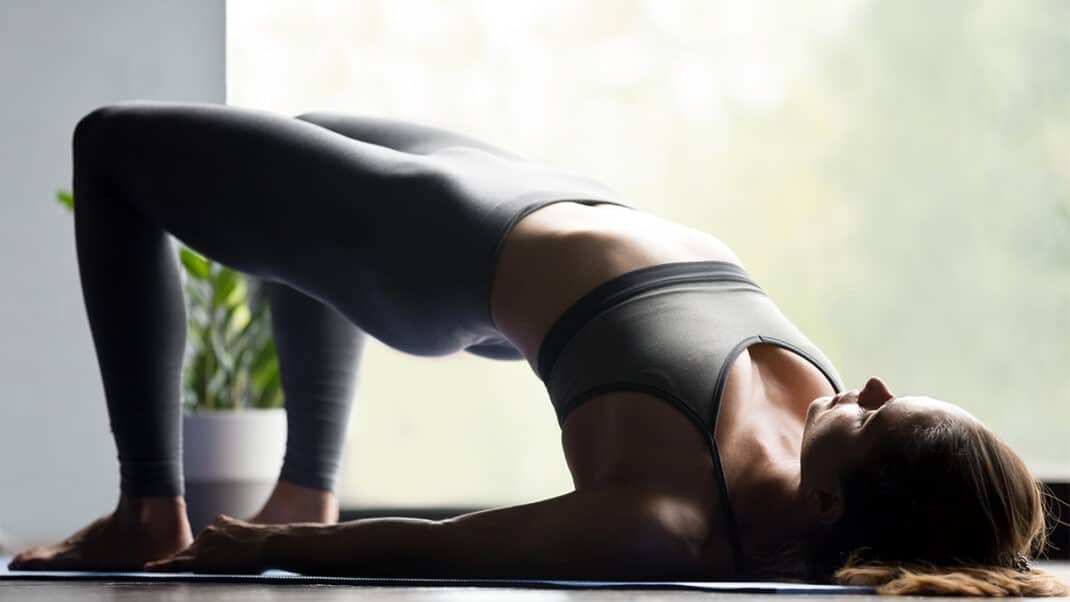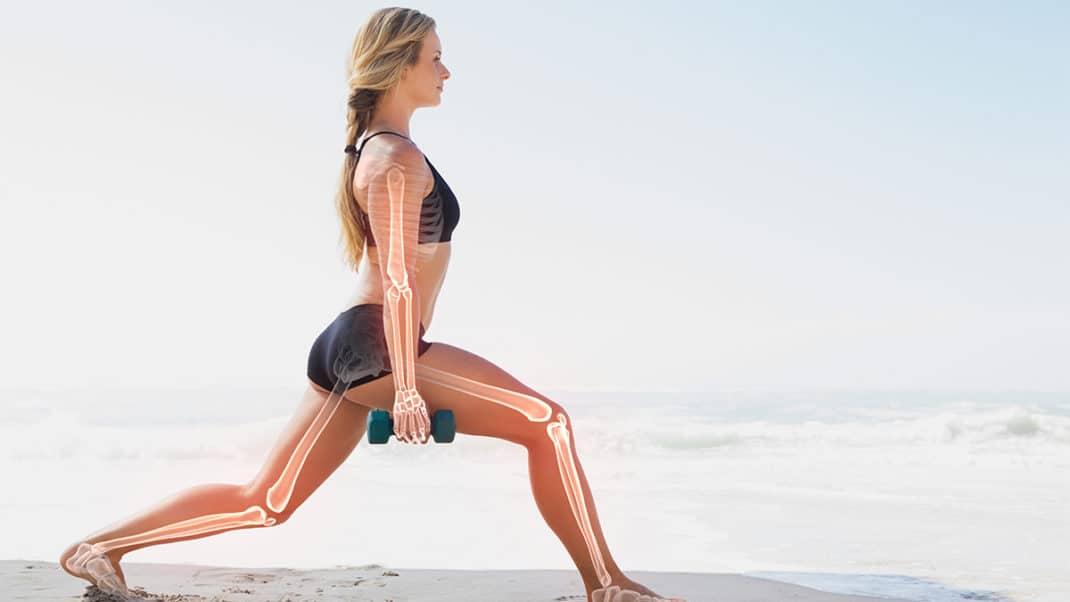Program Design: Plyometrics + Strength

Have you noticed that participants are showing up to classes ready to be pushed hard? The
challenge for you, as the instructor, is to keep class form-focused and safe while providing the dynamic moves participants crave. This workout—which mixes high-impact plyometrics with controlled, fluid strength moves requiring
mindfulness—allows you to do both.
Jump & Glide Details
Goal/Emphasis: full-body
workout, using minimal equipment to tax both the muscular and the cardiorespiratory systems
Time: 60 minutes
Equipment: Gliding™ discs or paper plates; optional: jump rope and mat
Music: 125-135 beats per minute, but participants should be encouraged to work at a comfortable pace
Warm-Up (5-8 minutes)
Create heat through the entire body and perform limbering movements. Incorporate the following:
- hamstring curls with chest openers and lat pulls
- squats
- plié squats
- lateral lunges with wide, static stance
- side stretches
- kickboxing bob-and-weave
Remind students to assess their bodies during the warm-up for any discomfort in the knees, lower back or shoulders, and to modify exercises during the work phase as needed.
Work Phase (40 minutes)
Complete three rounds of the following
sequence, resting 1-2 minutes between rounds and hydrating when necessary. Create short recoveries by giving specific form cues before exercises and cheering on class members.
Jump Rope or Jumping Jacks
- Cue participants to jump rope or do jumping jacks for 1 minute, staying soft in knees and landing lightly.
Gliding Twist
- Place disc beneath each foot and straighten into standing position, knees slightly bent; have arms in “biceps flexed” position.
- Do the twist (i.e., the dance) for 30 seconds, focusing on trunk rotators and quads.
- Encourage class members to go lower for more challenge and to keep knees aligned between ankles and hips.
Plyometric Curtsy Lunges
- Keeping hips level, drop into curtsy lunge, then hop laterally into curtsy on opposite leg.
- Focus on powering from gluteals, with
core engaged and knees aligned with toes. - Move arms naturally to help with power and balance.
- Perform 15-20 full moves.
- Regression: Make move smaller. Progression: Perform skater lunges.
Gliding Curtsy Lunges
- Start in standing position with Gliding disc beneath right foot only, heel lifted, knee slightly bent, hip-knee-ankle externally rotated about 45 degrees.
- Perform curtsy lunge as before, without alternating or hopping.
- Work into
glutes and keep abs strong. - Use hip flexors and adductors to pull back leg forward until body is back to starting position.
- Repeat 15–20 smooth, controlled reps; switch sides. Shake out hips if necessary.
Plyometric T-Thrusters
- Begin in high plank position, with quads, glutes and abs contracted.
- Hop feet out into jack, back to plank, then forward toward chest, elevating hips somewhat while contracting abdominals, then back to plank.
- Move quickly and smoothly in 4-count movement, cuing, “Out, in, up.”
- If hopping both feet forward bothers lower back, modify to single knee toward chest, alternating knees each time.
- Repeat 10x. This move is challenging, so tell participants to rest when they max out.
Gliding T-Thrusters
- Perform T-thrusters as before, but place disc beneath each foot and glide instead of hopping.
- Focus on retracting movements, such as adductors pulling legs back into plank and abdominals and hip flexors pulling knees toward chest.
- Repeat 10x.
- Regression: Hold plank. Progression: Change tuck phase to pike.
- Take child’s pose, to stretch.
Lunges With Knee Hop
- Start with R foot forward, L foot back in “lunge ready” position, hips level, knees tracking with hips and ankles in sagittal plane.
For more exercises, please see “Sample Class: Jump & Glide” in the online IDEA Library or in the January 2016 issue of IDEA Fitness Journal. If you cannot access the full article and would like to, please contact the IDEA Inspired Service Team at (800) 999-4332, ext. 7




